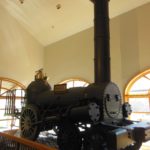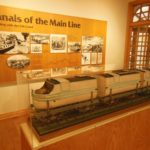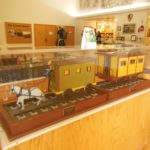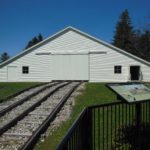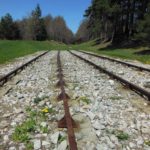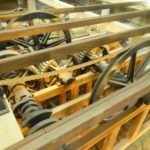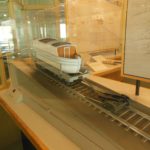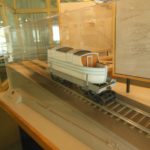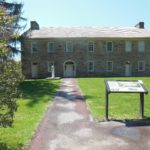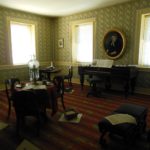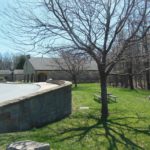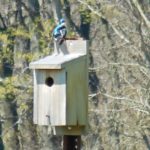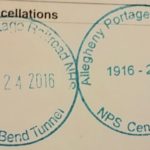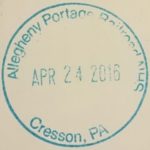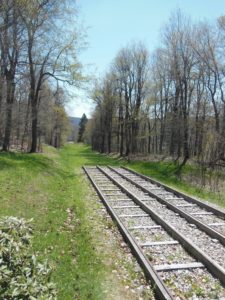 Well, it appears I’m not doing a very good job of keeping up with my theme this year. It’s a good thing I termed it “12 Parks/12 Months” because not only did I miss March, but I’m quite late on this post from April! In March, we had reservations at Furnace Creek in Death Valley to check out the superbloom, but battling baby’s first cold made us rethink the long drive. I did at least get a passport cancellation in March (more on that later), but we’ll have to catch up on national park visits later this year.
Well, it appears I’m not doing a very good job of keeping up with my theme this year. It’s a good thing I termed it “12 Parks/12 Months” because not only did I miss March, but I’m quite late on this post from April! In March, we had reservations at Furnace Creek in Death Valley to check out the superbloom, but battling baby’s first cold made us rethink the long drive. I did at least get a passport cancellation in March (more on that later), but we’ll have to catch up on national park visits later this year.
In April, we were back in the Johnstown area of Pennsylvania. On our last visit, we visited the Flight 93 and Johnstown Flood Memorials. This time, we hit up the one remaining NPS site in the area, the Allegheny Portage Railroad National Historic Site in Gallatzin, PA, about 25-30 min northeast of Johnstown. Much less depressing than the other sites, the Allegheny Portage Railroad NHS is fun tribute to historical infrastructure and engineering.
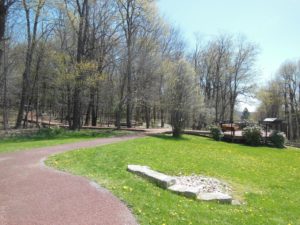 The “Main Line” of the Public Works system was a series of canals and rail segments that connected Pittsburgh to Philadelphia and was intended to compete with the Erie Canal. The rail sections and inclines provided means by which to cross the Allegheny Mountains. In the Visitor’s Center, they have displays showing how sectional canal boats would be loaded onto railcar platforms then towed by horses or steam engines for the overland sections. Ten inclines used cables and pulleys powered by engine rooms to pull cargo and passenger cars up and down the mountain.
The “Main Line” of the Public Works system was a series of canals and rail segments that connected Pittsburgh to Philadelphia and was intended to compete with the Erie Canal. The rail sections and inclines provided means by which to cross the Allegheny Mountains. In the Visitor’s Center, they have displays showing how sectional canal boats would be loaded onto railcar platforms then towed by horses or steam engines for the overland sections. Ten inclines used cables and pulleys powered by engine rooms to pull cargo and passenger cars up and down the mountain.
The portage, opened in 1834, served both as a means to transport goods and people, although it fell out of vogue within about 20 years. From the Visitor’s Center, you can walk down a boardwalk to Engine House #6 to look at reproductions of the Engine Room and cables. The current Engine House is built slightly larger to preserve the original foundation still visible inside the building. There are models of the braking system for runaway cars as well as some interesting firsthand accounts to read.
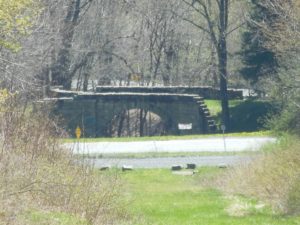 From the Engine House, you have the option to walk down to see the Skew Arch Bridge, so named because the arch of the bridge had to be built at an angle to accommodate a non-right-angled intersection of the rail and road. In the other direction was the Cotton House, a popular tavern and residence serving passengers awaiting the continuation of their travels. From there, it’s a short walk up a service road back to the parking lot. We headed on our way after that little loop, but greatly enjoyed our stop. As a bonus, the volunteer in the Visitor’s Center gave us a bit of the local history, including who Prince Gallatizin is and where to find the summer home (now a friary) of Charles M. Schwab.
From the Engine House, you have the option to walk down to see the Skew Arch Bridge, so named because the arch of the bridge had to be built at an angle to accommodate a non-right-angled intersection of the rail and road. In the other direction was the Cotton House, a popular tavern and residence serving passengers awaiting the continuation of their travels. From there, it’s a short walk up a service road back to the parking lot. We headed on our way after that little loop, but greatly enjoyed our stop. As a bonus, the volunteer in the Visitor’s Center gave us a bit of the local history, including who Prince Gallatizin is and where to find the summer home (now a friary) of Charles M. Schwab.
